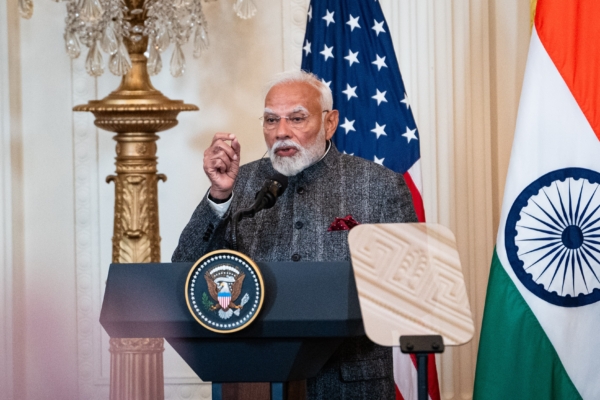Under the leadership of Prime Minister Narendra Modi and his “Make in India” initiative, India has not only successfully exported low-cost iPhones and pharmaceuticals but is now making aggressive moves into the global arms market. The country aims to include missiles, helicopters, and warships in its export list, and through expanding access to long-term low-interest loans, it seeks to target countries traditionally reliant on Russian arms.
According to reports from Reuters citing Indian officials and industry insiders, the Indian government is strengthening its long-term low-interest loan mechanism through its state-owned Export-Import Bank (EXIM) and is deploying defense attaches abroad to fully drive arms exports, with a focus on countries previously dependent on Russian military equipment.
This development indicates an unprecedented proactive involvement of the Indian government in marketing and financing defense equipment, especially at a time when global military expenditures are soaring and geopolitical landscapes are being reshaped.
Following the outbreak of the Russia-Ukraine war in 2022, Western countries provided massive military aid to Ukraine, leading to a tension in arms supply. Russia prioritized meeting its own needs, making it difficult to export arms. As a result, countries that have long relied on American and Russian arms are seeking alternative sources, with India, which combines Russian and Western technology advantages, emerging as a viable alternative option of international attention.
Indian Defence Minister Rajnath Singh recently stated on the social media platform X that India is actively working to expand its strategic goal of defense exports. He mentioned that in the fiscal year 2024-25, India’s defense exports hit a historic high of Rs 236.22 billion (approximately $28 billion), a 12.04% increase from the previous fiscal year.
Singh emphasized, “Under the leadership of Prime Minister Modi, India is steadily moving towards its goal of increasing defense exports to Rs 500 billion (around $58 billion) by 2029.”
According to data released by the Indian government, the total value of arms production in India for the fiscal year 2023-24 reached $14.8 billion, a significant 62% increase from 2020. Reuters has also reported the presence of Indian-manufactured artillery shells on the front lines in Ukraine, being used in defense operations in Kyiv.
The Modi government has set a target to double weapon and equipment exports to reach $6 billion by 2029. A decade ago, India’s defense exports were only $230 million.
In the backdrop of global supply shortages and soaring arms prices, India is penetrating the market with the advantage of being “cost-effective and prompt in delivery.” For instance, the production cost of a 155mm artillery shell in India is only $300 to $400 per unit, significantly lower than the cost of over $3,000 in Europe. The sale price of an Indian-made howitzer is around $3 million per unit, approximately half the price of similar European products.
Indian private companies such as Adani Defence & Aerospace and ammunition manufacturer SMPP are ramping up the production of heavy artillery and ammunition, having already secured foreign orders. Ashish Kansal, CEO of SMPP, stated that “with the evolving situation, there will be a significant increase in the demand for artillery shells.”
To address the reluctance of financial institutions to lend to high-risk countries, the Indian government plans to expand arms sales financing through the commercial lending department of the state-owned Export-Import Bank. This move not only alleviates the government’s fiscal pressure but also helps compete with China and Turkey, which also provide financing along with weapon sales.
India has a keen eye on the Brazilian market, with the state-owned Export-Import Bank setting up an office there earlier this year to negotiate the sale of India’s indigenously developed Akash mobile air defense missile system and participate in Brazil’s naval shipbuilding program. India’s largest military electronics firm Bharat Electronics (BLT) has established a marketing presence in Sao Paulo, focusing on the components of the Akash missile system.
In order to expand its arms diplomacy, the Indian government plans to deploy at least 20 defense attaches to its embassies abroad by March 2026. These countries include Algeria, Morocco, Guyana, Tanzania, Argentina, Ethiopia, and Cambodia, where most of them have had a reliance on Russian military equipment and are compatible with Indian technology, presenting high export potential.
For example, since India first dispatched defense attaches to Armenia in 2023, the country has significantly weakened Russia’s monopoly on military supplies locally. According to the Stockholm International Peace Research Institute (SIPRI), India accounted for 43% of Armenia’s arms imports between 2022 and 2024, a sharp increase from almost zero between 2016 and 2018.
Despite the price advantage of Indian weapons, the country still faces challenges in promoting high-end weaponry. Experts point out that without deploying and field-testing domestically manufactured weapons extensively in the Indian military, its performance and reliability may struggle to gain international market recognition.
While India is aggressively pursuing self-reliance in defense, it remains one of the world’s largest arms importing countries. The latest SIPRI data reveals that from 2020 to 2024, India ranked as the world’s second-largest arms importer, accounting for 8.3% of the global total, second only to Ukraine (8.8%) due to emergency arms procurement during the conflict.
As global military competition intensifies and traditional supply chains are reshaped, India is actively positioning itself in the global market through a dual-track approach of government-led initiatives and private sector participation. The key to its successful transformation will lie in whether it can achieve breakthroughs in quality and political trustworthiness.
(This article was referenced from relevant reports by Reuters.)

